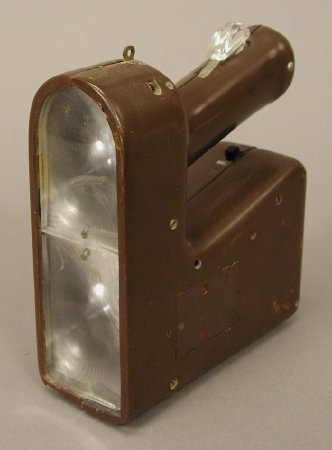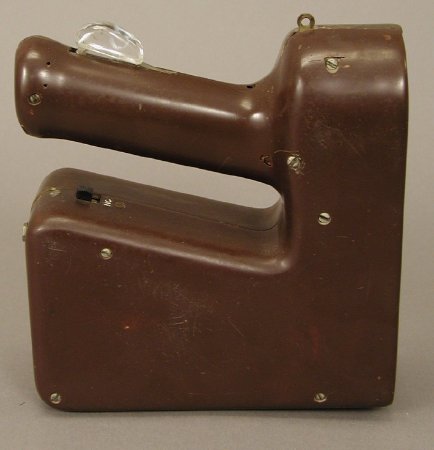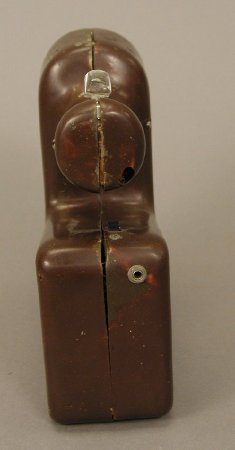Object ID:
2007.33.7
Title:
G-4 Obstacle Detector
Description:
Brown Bakelite case; handle on top behind top of case, roughly parallel to case; window in front with two stacked fresnel lenses, top lens has a rounded top and is slightly smaller than the lower rectangular lens; mini-jack for testing on back of case, sliding on/off toggle on top of case below handle; clear plastic activation button on top of handle, output "needle" on bottom of handle, almost at its base; jack for recharging on base, adhesive label there reads "Do NOT use a G-5 Charger!!"; rectangular hatch secured with screw on left side.
Dimensions:
H-7.625 W-2.75 D-6.75 inches
Date:
ca. 1953
Made by:
Biophysical Instruments, Inc.; Benham, Thomas A.
Place of Origin:
Haverford, PA
Provenance:
Blind since boyhood, Thomas A. Benham earned his doctorate in electrical engineering from Penn and taught physics and math at Haverford College until he retired in 1976. In 1950, he began working under contract with the Veterans Administration to evaluate the Signal Corps Obstacle Detector. In 1953, Haverford subcontracted further investigations to Biophysical Instruments, Inc., whose lead investigator, Malvern Benjamin, worked with Benham to develop three different protype obstacle detectors based upon the same principles as the Signal Corps model, the G-4, G-5, and Flashlight Obstacle Detectors. All three used reflected light to detect obstacles/objects in the direction ahead of the user. The G-4 was an early model which apparently never made it past the prototype stage. It appears to lack the range adjustment of the later G-5.
Credit Line:
Gift of Association for Education and Rehabilitation of the Blind and Visually Impaired


